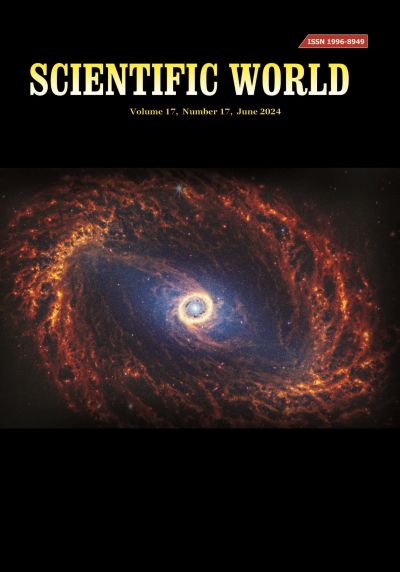Uptake of Arsenic and Lead ions by the adsorbent material prepared from physiochemical modification of spinach leaves
DOI:
https://doi.org/10.3126/sw.v17i17.66436Keywords:
Freundlich isotherm, Langmuir isotherm, Optical micrograph, Reflux, Spinach adsorbent.Abstract
Physiochemically modified adsorbent material from spinach was prepared by refluxing for 12, 24 and 36 hours in ortho phosphoric acid solution with in the temperature range between 60 - 100 °C. The highest specific surface area of 436 m2/g was obtained with refluxing for 24 hours sample (SA-24) and was selected for the adsorption of As(III) and Pb(II) ions from the aqueous solution with varying several parameters such as pH, kinetics, and concentration of adsorbent.
The adsorbent before and after adsorption of As(III) and Pb(II) was characterized by FTIR and XRD. Studies showed that the maximum efficiency at pH 5 for As(III) and Pb(II). Kinetics and isotherm model studies demonstrated that the experimental data fitted with pseudo-second order and Langmuir isotherm model with the rate constants 2.495 and 0.039 g/(mg·min) and the maximum adsorption capacities 116.28 and 128.21 mg/g for As(III) and Pb(II), respectively. The negative free energy (ΔG values -23 and -25 kJ/mol for As(III) and Pb(II), respectively) in adsorption process revealed the spontaneous nature and feasibility of the adsorption process onto spinach adsorbent. The values of ΔG further confirmed that the adsorption process was favored by physiochemical adsorption for As(III) and Pb(II), respectively.




